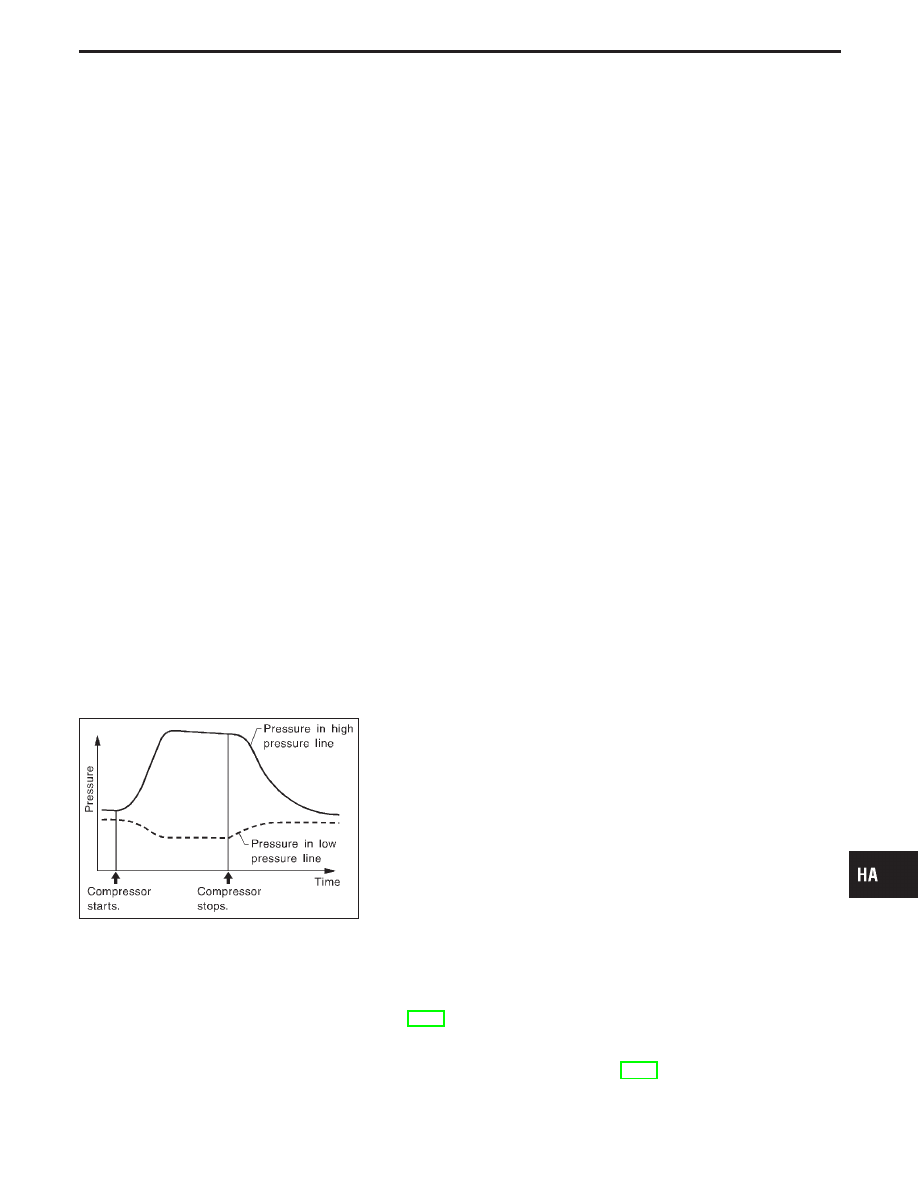Infiniti Q45 (FY33). Manual - part 492

I
Cooling unit (Evaporator)
With engine “off”, turn blower fan on “High” for at least 15 sec-
onds to dissipate any refrigerant trace in the cooling unit. Wait
a minimum of ten minutes accumulation time* before inserting
the leak detector probe into the drain hose. (Keep the probe
inserted for at least ten seconds.) Use caution not to contami-
nate the probe tip with water or dirt that may be in the drain
hose.
*: (Refer to the manufacturer’s recommended procedure for
actual wait time.)
5.
If a leak detector detects a leak, verify at least once by blow-
ing compressed air into area of suspected leak, then repeat
check as outlined above.
6.
Do not stop when one leak is found. Continue to check for
additional leaks at all system components. If no leaks are
found, perform steps 7 - 10.
7.
Start engine.
8.
Set the heater A/C control as follows:
a.
A/C switch ON
b.
Face mode
c.
Recirculation switch ON
d.
Max cold temperature
e.
Fan speed high
9.
Run engine at 1,500 rpm for at least 2 minutes.
10. Turn engine off and perform leak check again, following steps
4 through 6 above.
SHA839E
Refrigerant leaks should be checked immediately after stop-
ping the engine. Begin with the leak detector at the compres-
sor. The pressure on the high pressure side will gradually
drop after refrigerant circulation stops and pressure on the
low pressure side will gradually rise, as shown in the graph.
Some leaks are more easily detected when pressure is high.
11. Before connecting ACR4 to vehicle, check ACR4 gauges. No
refrigerant pressure should be displayed. If NG, recover refrig-
erant from equipment lines.
12. Confirm refrigerant purity in supply tank using ACR4 and refrig-
erant identifier. If NG, refer to “Contaminated refrigerant”,
HA-3.
13. Connect ACR4 to vehicle. Confirm refrigerant purity in vehicle
A/C system using ACR4 and refrigerant identifier. If NG, refer
to “Contaminated refrigerant”, HA-3.
14. Discharge A/C system using approved refrigerant recovery
equipment. Repair the leaking fitting or component as neces-
sary.
GI
MA
EM
LC
EC
FE
AT
PD
FA
RA
BR
ST
RS
BT
EL
IDX
SERVICE PROCEDURES
Electronic Refrigerant Leak Detector (Cont’d)
HA-133